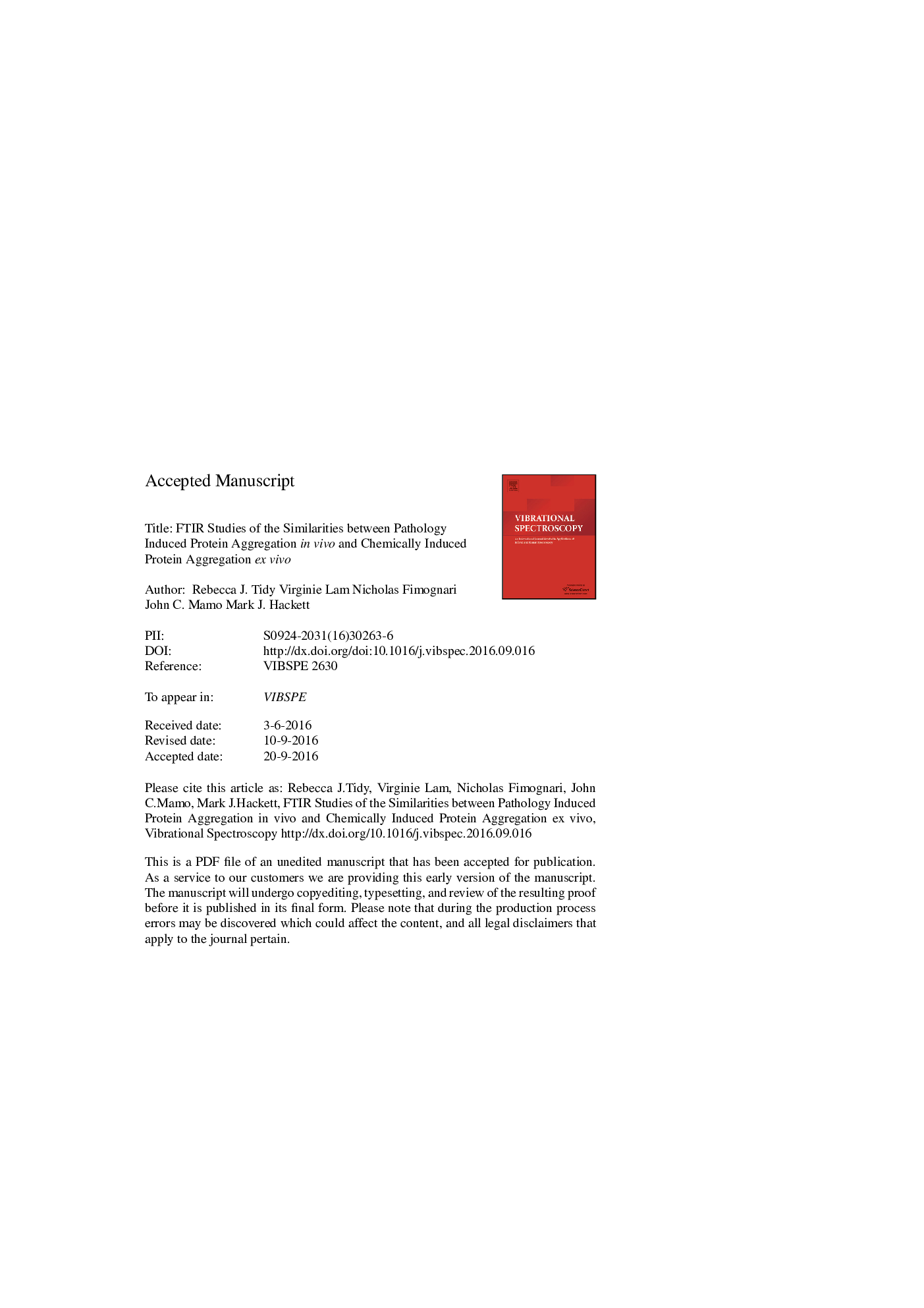| Article ID | Journal | Published Year | Pages | File Type |
|---|---|---|---|---|
| 5141869 | Vibrational Spectroscopy | 2017 | 21 Pages |
Abstract
Oxidative stress is a generic feature of neurodegenerative diseases and also occurs during neurodegenerative conditions, such as stroke, multiple sclerosis, epilepsy and cerebral malaria. These neuropathological disorders do not have an established protein misfolding pathology, in contrast to Prion disease, Amyotrophic Lateral Sclerosis, Huntington's Disease, Alzheimer's' Disease, which do have an established protein misfolding pathology. Interestingly, recent studies using FTIR have confirmed the presence of protein aggregates within the central nervous system during stroke, cerebral malaria, epilepsy, multiple sclerosis. Such reports suggest FTIR spectroscopy may be a highly valuable research tool to study protein aggregation as a marker of oxidative stress and neurodegeneration in many diseases, not just those with a characteristic pathology for protein misfolding. This manuscript extends the recent literature and reports further characterization of the alterations to the amide I band that result from ubiquitous ex vivo protein aggregation in cerebral tissue. The new data presented highlights that the spectroscopic alterations to the amide I band often reported for amyloid-β plaques in Alzheimer's disease, are spectroscopically very similar to spectroscopic alterations observed during ischemia induced neurodegeneration (stroke) and ex vivo induced protein aggregation. As such, this study further validates FTIR as a useful platform to study protein aggregation in neurological disorders, including those not characterized by protein misfolding pathology.
Related Topics
Physical Sciences and Engineering
Chemistry
Analytical Chemistry
Authors
Rebecca J. Tidy, Virginie Lam, Nicholas Fimognari, John C. Mamo, Mark J. Hackett,
